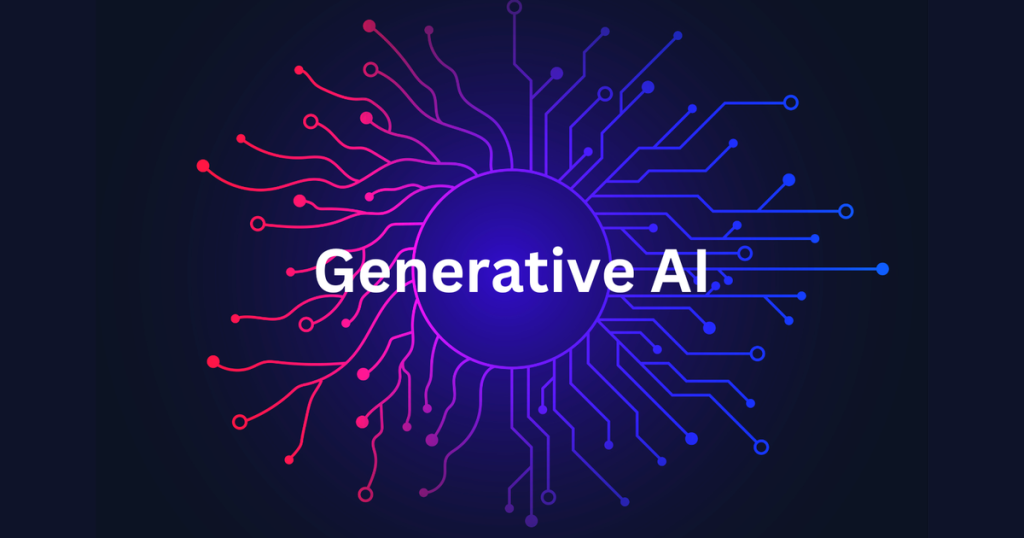
Generative AI is a type of artificial intelligence that generates new content based on patterns and examples it has learned during training. Using massive amounts of data, generative AI models learn to create outputs that mimic the style, structure, and even creativity of the input data. At its core, generative AI utilizes advanced machine learning techniques like deep learning, natural language processing (NLP), and neural networks to simulate human-like creativity.
The Foundation: Machine Learning and Neural Networks
Generative AI relies heavily on deep learning, which uses artificial neural networks. These networks are composed of layers of nodes (neurons) that process data, making them highly effective at detecting patterns. Here’s a simplified look at the process:
- Data Collection and Preprocessing: Generative AI models require a vast amount of data. For instance, a generative text model might be trained on millions of books, articles, and other written content. This data is then preprocessed, cleaned, and converted into a format that the model can understand.
- Training the Model: The model undergoes a training process where it learns patterns from the data. Each neuron in the network adjusts its parameters as it “learns” the input data, refining its accuracy over time. During training, the model uses algorithms to minimize errors, making predictions and adjusting until it closely mimics the input data.
- Generating Content: Once trained, the model can generate new content by sampling patterns it has learned. For example, when prompted with a few words or sentences, a generative text model can produce coherent, contextually relevant text. Similarly, an image model can generate visuals based on a particular style or subject.
Key Techniques Behind Generative AI
There are a few main techniques that generative AI employs to create realistic content:
1. Generative Adversarial Networks (GANs)
GANs are commonly used in generative AI models, especially for generating images. They consist of two neural networks—a generator and a discriminator—that work together in a game-like scenario. The generator creates new data (e.g., images), while the discriminator evaluates them. The two networks “compete” against each other, with the generator improving its outputs to trick the discriminator. This iterative process results in highly realistic content.
2. Transformers
Transformers are the backbone of many language models, including GPT (Generative Pretrained Transformer). Transformers work by focusing on different parts of the input data simultaneously, allowing the model to understand context, sequence, and relationships in text. This capability enables language models to generate coherent and contextually appropriate responses.
3. Variational Autoencoders (VAEs)
VAEs are another type of neural network used to generate images, text, and other forms of data. They work by compressing input data into a lower-dimensional space (encoding) and then reconstructing it (decoding). During this process, VAEs can create variations of the input data, making them useful for generating content that retains essential characteristics of the original data while introducing unique elements.
Applications of Generative AI
Generative AI is impacting many industries, bringing innovation and creativity to new heights. Here are some popular applications:
- Text Generation: Models like ChatGPT and GPT-4 can generate essays, articles, dialogues, and answers to questions, enabling chatbots, virtual assistants, and content creators to scale efficiently.
- Image and Art Generation: Tools like DALL-E and Midjourney use generative AI to create stunning images, artwork, and visual concepts based on textual prompts, revolutionizing design, advertising, and entertainment industries.
- Music and Audio Generation: Generative AI can create original music compositions and soundscapes, helping musicians and producers explore new creative directions and streamline production.
- Synthetic Data Creation: Generative models can produce synthetic data, which is particularly useful for training other AI models. For example, generating synthetic images of rare medical conditions helps healthcare models improve diagnostic accuracy.
- Gaming and Virtual Worlds: AI-generated landscapes, characters, and storylines are becoming integral in gaming, enhancing player experiences and enabling dynamic, customizable environments.
The Pros and Cons of Generative AI
Pros
- Boosts Creativity and Efficiency: Generative AI assists humans in producing creative outputs faster and more efficiently.
- New Innovations in Healthcare, Education, and More: From generating training data for diagnostic models to developing personalized learning tools, generative AI is opening new doors across industries.
- Enhanced User Experiences: AI-powered content recommendations, personalized interactions, and virtual assistants all contribute to a more engaging and tailored experience for users.
Cons
- Potential for Misuse: Generative AI can be used to create deepfakes, fake news, and other misleading content, raising ethical concerns.
- Job Displacement: While generative AI creates new jobs in tech, it could also disrupt roles in content creation, media, and design.
- Quality Control: Generative models sometimes produce biased, inappropriate, or nonsensical content, requiring human oversight to ensure quality and accuracy.
What’s Next for Generative AI?
Generative AI is still evolving, and its future promises even more groundbreaking advancements. Researchers are focusing on improving model efficiency, reducing biases, and enhancing interpretability. As models become more advanced, they are expected to better understand human emotions, generate highly personalized content, and integrate seamlessly into everyday tools, making AI a natural part of our digital lives.
Final Thoughts
Generative AI represents a transformative shift in how we create and interact with technology. By enabling machines to produce new content autonomously, we are stepping into an era where AI doesn’t just replicate human tasks but also collaborates in creative and innovative ways. While there are challenges to address, the potential benefits of generative AI in fields like education, healthcare, art, and entertainment are immense. As we continue to develop and refine these technologies, generative AI will undoubtedly play an essential role in shaping our future.
